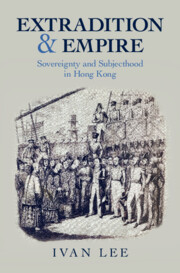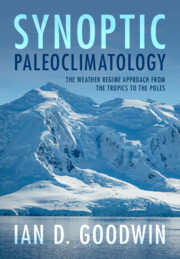Refine listing
Actions for selected content:
1295047 results in Books

Ability and Difference in Early Modern China
- A Mongol Family at the Ming Court
-
- Published online:
- 10 September 2025
- Print publication:
- 11 September 2025

Extradition and Empire
- Sovereignty and Subjecthood in Hong Kong
-
- Published online:
- 10 September 2025
- Print publication:
- 03 July 2025

Intersections of Housing Precarity, Health and Wellbeing in Diverse Global Settings
- What Is Happening to Housing?
-
- Published by:
- Bristol University Press
- Published online:
- 10 September 2025
- Print publication:
- 26 May 2025

Europe's World
- Policy Paradigms, Strategic Thinking and the Anti-Liberal Challenge
-
- Published by:
- Bristol University Press
- Published online:
- 10 September 2025
- Print publication:
- 27 May 2025

Long-Term Care and Older People in Western Europe
- Lessons from the COVID-19 Pandemic
-
- Published by:
- Bristol University Press
- Published online:
- 10 September 2025
- Print publication:
- 30 June 2025

Land, Capital and Extractive Frontiers
- Social Conflict and Ecological Crisis in the Senegal River Delta
-
- Published by:
- Bristol University Press
- Published online:
- 10 September 2025
- Print publication:
- 28 April 2025

Risk and Resistance
- How Feminists Transformed the Law and Science of AIDS
-
- Published online:
- 10 September 2025
- Print publication:
- 09 October 2025

Ceramic Analysis
- Laboratory Methods
-
- Published online:
- 10 September 2025
- Print publication:
- 09 October 2025
-
- Element
- Export citation

AI and Image
- Critical Perspectives on the Application of Technology on Art and Cultural Heritage
-
- Published online:
- 10 September 2025
- Print publication:
- 09 October 2025
-
- Element
-
- You have access
- Open access
- HTML
- Export citation

Russia and the Syrian Conflict
- Moscow's Domestic, Regional and Strategic Interests
-
- Published by:
- Gerlach Press
- Published online:
- 09 September 2025
- Print publication:
- 30 July 2016

The Late Antique World of Early Islam
- Muslims among Christians and Jews in the East Mediterranean
-
- Published by:
- Gerlach Press
- Published online:
- 09 September 2025
- Print publication:
- 31 January 2021

Synoptic Paleoclimatology
- The Weather Regime Approach from the Tropics to the Poles
-
- Published online:
- 09 September 2025
- Print publication:
- 25 September 2025

Interpreting Identities
- Dimensions of Power, Presence, and Belonging
-
- Published by:
- Bristol University Press
- Published online:
- 09 September 2025
- Print publication:
- 22 April 2025

Turkish-Saudi Relations
- Cooperation and Competition in the Middle East
-
- Published by:
- Gerlach Press
- Published online:
- 09 September 2025
- Print publication:
- 31 December 2020

The Trucial Coast Political Reports 1958-1963
- The Slow Progress from Pearls to Oil
-
- Published by:
- Gerlach Press
- Published online:
- 09 September 2025
- Print publication:
- 31 May 2021

Reckoning with Law in Excess
- Mobilization, Confrontation, Refusal
-
- Published online:
- 09 September 2025
- Print publication:
- 25 September 2025
-
- Book
-
- You have access
- Open access
- Export citation

Democracy's Double Helix
- Participation, Equality and Revolution in Early Modern Europe
-
- Published online:
- 09 September 2025
- Print publication:
- 14 August 2025

Horizontal Development
- Shifting Power and Privilege in Aid
-
- Published by:
- Bristol University Press
- Published online:
- 09 September 2025
- Print publication:
- 26 June 2025

The Silent Revolution
- The Arab Spring and the Gulf States
-
- Published by:
- Gerlach Press
- Published online:
- 09 September 2025
- Print publication:
- 30 April 2014

The Politics of Food Security
- Asian and Middle Eastern Strategies
-
- Published by:
- Gerlach Press
- Published online:
- 09 September 2025
- Print publication:
- 30 September 2014
